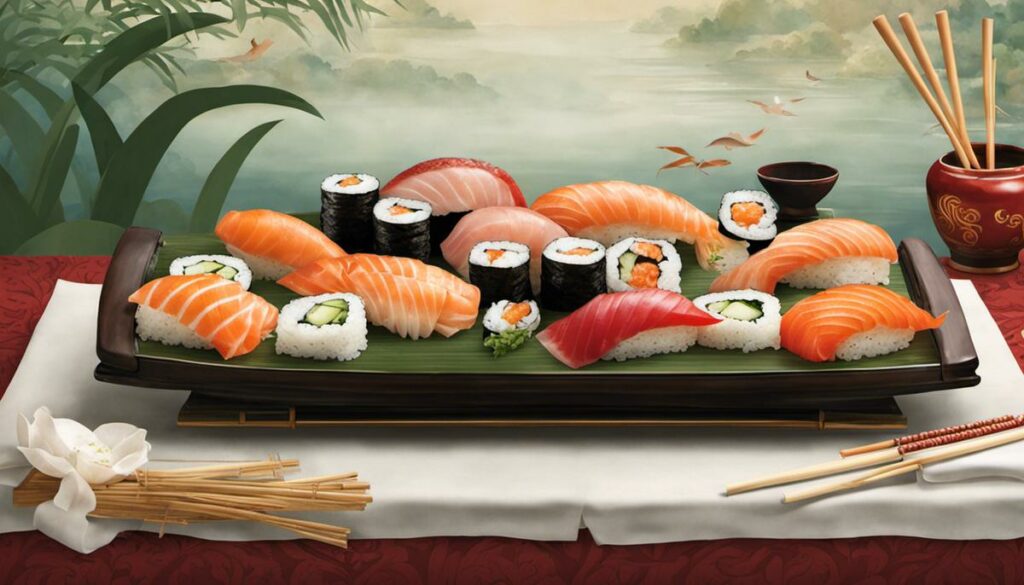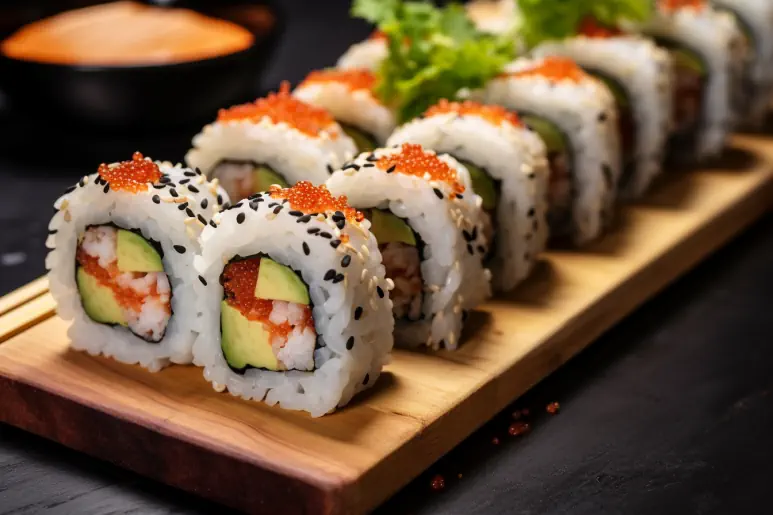The treat known as sushi — a dazzling gift from Japan — is more than just a meal. It’s a celebration of inventiveness and tradition, a culinary experience that has its roots deep in history. From its humble beginnings in Southeast Asia to its metamorphosis in the modern culinary world, the journey of sushi is as diverse as the ingredients used in its numerous variations. This work of art of gourmetry bears the signatures of different cultures and eras that have carried and shaped it through the centuries. By looking at the history of sushi, it is possible to explore the deep-rooted philosophical and cultural values behind this dish and intensify the appreciation for this exquisite dish.
The Origins of Sushi
Title: The Origin of the Era of Sushi: A Journey Through Time and Around the World
The fascinating mix of taste, culture and aesthetics makes sushi a popular phenomenon worldwide. But has it ever occurred to you where and how it all began? Here’s a culinary tour that explores the origins of this iconic Japanese cuisine.
Sushi, a word meaning “sour taste,” was originally created to preserve raw fish. This can be traced back to the fourth century BC in Southeast Asia. Originally, raw fish were created together with fermented rice, with natural fermentation making the fish durable for a long time.
Over time, these techniques migrated to the land of the rising sun, Japan. It was there that the era of sushi as we know it today began. In the 17th century, Hanaya Yohei introduced the new type of sushi in the capital city of Edo, now Tokyo. This fast food, revolutionary at the time, consisted of fresh fish and leavened rice that was no longer fermented. This allowed for instant enjoyment and marked the beginning of the fast food trend in Japan.
At the beginning of the 19th century, these “edomae sushi“, named after Edo Bay, developed their spectacular design language. The small rice rolls, topped with intriguing toppings, were arranged to be a real delight for the eyes – not to mention the explosion of flavours in the mouth.
Over time, sushi has evolved and adapted to regional variations, but its central importance – raw fish and leavened rice – remains unchanged. Today, sushi is a symbol of Japanese culture and has achieved the status of a globalized kitchen dish.
Comparable to the “little black dress” in the fashion world, which is always elegant and never goes out of style, sushi has secured its place as an eternal highlight on the culinary stage. It has established itself as an art form that perfectly combines aesthetics and taste. Who could have imagined this for an original preservative food over 2000 years ago? Even in the digital era, sushi retains its charm and remains an Instagram-worthy dish that will likely never lose its appeal.
The origin of sushi is not so much a story of coincidences, but rather a story of evolution and innovation out of necessity. And so, sushi becomes not only a history lesson, but also proof that our culinary tastes and preferences are just as malleable and changeable as our wardrobe.
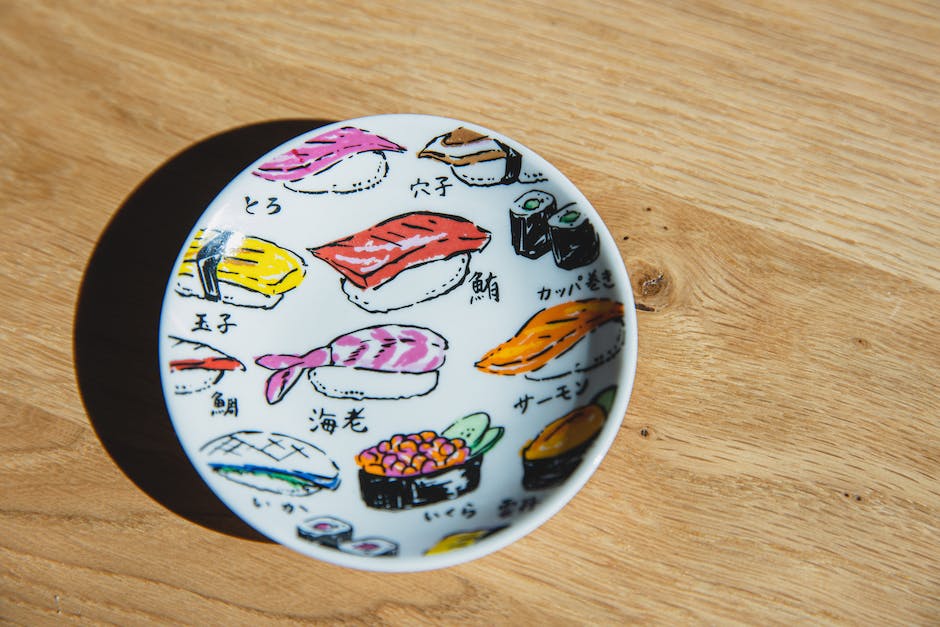
The Culture and Philosophy Behind Sushi
Sushi – More than just a delicacy
Beyond the exquisite taste and minimal aesthetics, sushi is heavily steeped in symbolism and culture. It’s a testament to the celebration of simplicity and the underlying “less is more” mindset. The meaning goes far beyond the culinary experience and is often overlooked, although it is just as seductive as the taste.
One of the most striking aspects of sushi is its strong connection to nature. The colours and flavours on the plate reflect the seasons and the dynamics of the environment. The use of ingredients such as seafood or seasonal vegetables is a constant reminder of nature’s dependence and appreciation. It sets the tone for a clear awareness and a sustainable way of life.
Sushi is also a perfect example of the long practice of Japanese minimalism. Each piece is a demonstration of the art brought to perfection in a single bite. It’s a mirror to the centuries-old Japanese aesthetic of wabi-sabi, a mindset that sees simplicity and imperfection as the ultimate goal of beauty.
The spiritual aspect of sushi should not go unmentioned either. The preparation requires mindfulness and harmony – values that are deeply rooted in Japanese Zen philosophy. It’s more than just the physical act of rolling or shaping – it’s a form of meditation that requires presence and evokes mindfulness.
In terms of the social dimension, sushi is a means of promoting community. The act of eating sushi – often together around a table – promotes the concept of conviviality and community, which is highly valued in Japanese culture.
After all, in an increasingly digitized world, sushi is a symbol of authenticity and tradition that defies change. It serves as a reminder of cultural identity and heritage, while still expressing itself in new and exciting forms.
Overall, sushi is much more than just a culinary delight. It’s an experience that’s both edible and experiencable, a mix of symbolism, culture, and spirituality wrapped up in a small, shapely, delicious package. It is a piece of Japanese culture that has become a global delicacy, as rich in history and meaning as it is delicious.
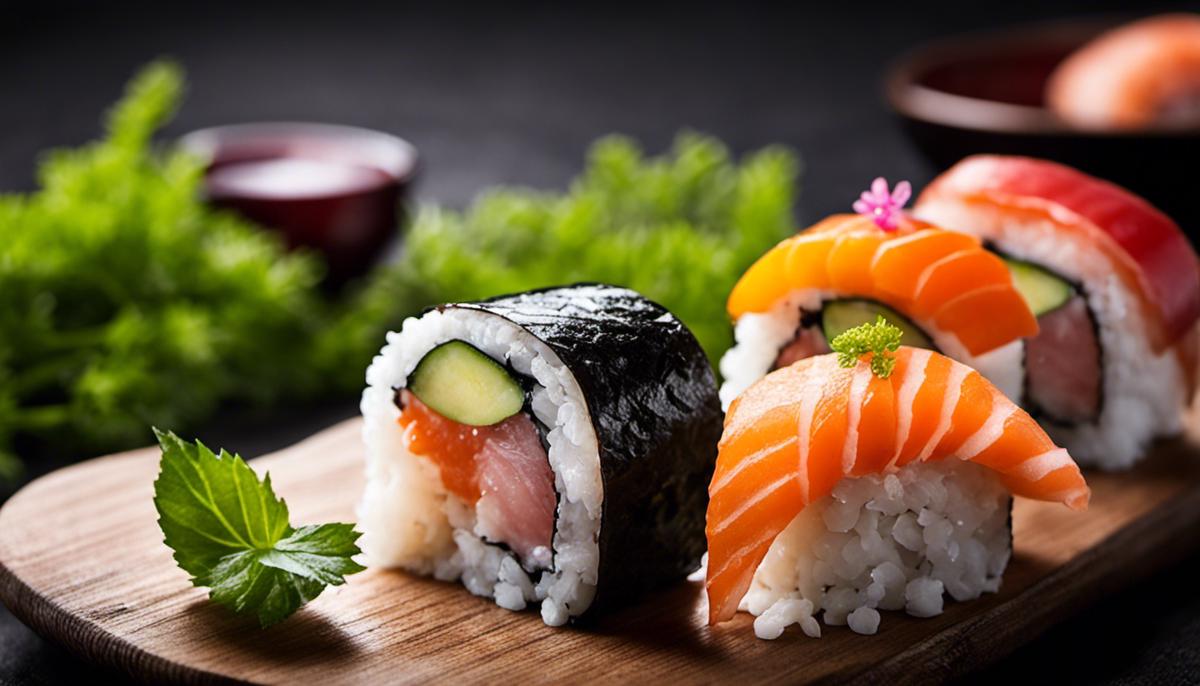
The worldwide spread and popularity of sushi
Fascinatingly, the worldwide spread of sushi began at a time when most people didn’t even know what sushi was. As the world became smaller due to improved transport links and increased international interaction in the post-war 20th century, sushi found its way out of Japan and into the menus of the whole world.
Essential in this development was, of course, the preference of Westerners for exotic and exquisite culinary delights. Sushi, which cleverly combines the finest of seafood with the simple benefits of beauty and craftsmanship in an elaborate dish, was ideally positioned for this sensory intoxication . Furthermore, sushi became a symbol of nobility, giving its consumers a sense of luxury and exclusivity .
Another crucial factor was the connection between food and aesthetics – a principle deeply rooted in Japanese culture . This aesthetic appeal, which is so strongly associated with sushi, has helped it become successful outside of Japan as well. We also can’t ignore the influence of Japanese minimalism on the world. Its precursor, Zen Buddhism, is a crucial part of the sushi aesthetic.
In connection with the aesthetic dimension, the cultivation of sushi also has a spiritual dimension. Making sushi requires a meditative devotion that goes beyond physical labor. It is a spiritual practice that leads to an experience of self-forgetfulness and an appreciation of simple, natural ingredients.
Parallels can also be drawn at the social level. Sushi has an important place in social bonding structures. It is typically enjoyed in groups and is a great way to make and build relationships. The social dimension of sushi has certainly not harmed its popularity and growth in a global world.
Sushi is authentic and a symbol of centuries-old traditions. Every aspect of sushi, from preparation to enjoyment, has a deeper cultural and symbolic background. Sushi is not only a culinary experience, but also a living representation of cultural identity and heritage.
Overall, it is precisely these factors: the connection with nature, Japanese minimalism, the spiritual and social dimension, as well as the authenticity and tradition that have made sushi one of the most beloved gastronomic delights and an icon of global culture. Sushi has made its way from Asia to all over the world by capturing the hearts, palates and Instagram feeds of people worldwide.
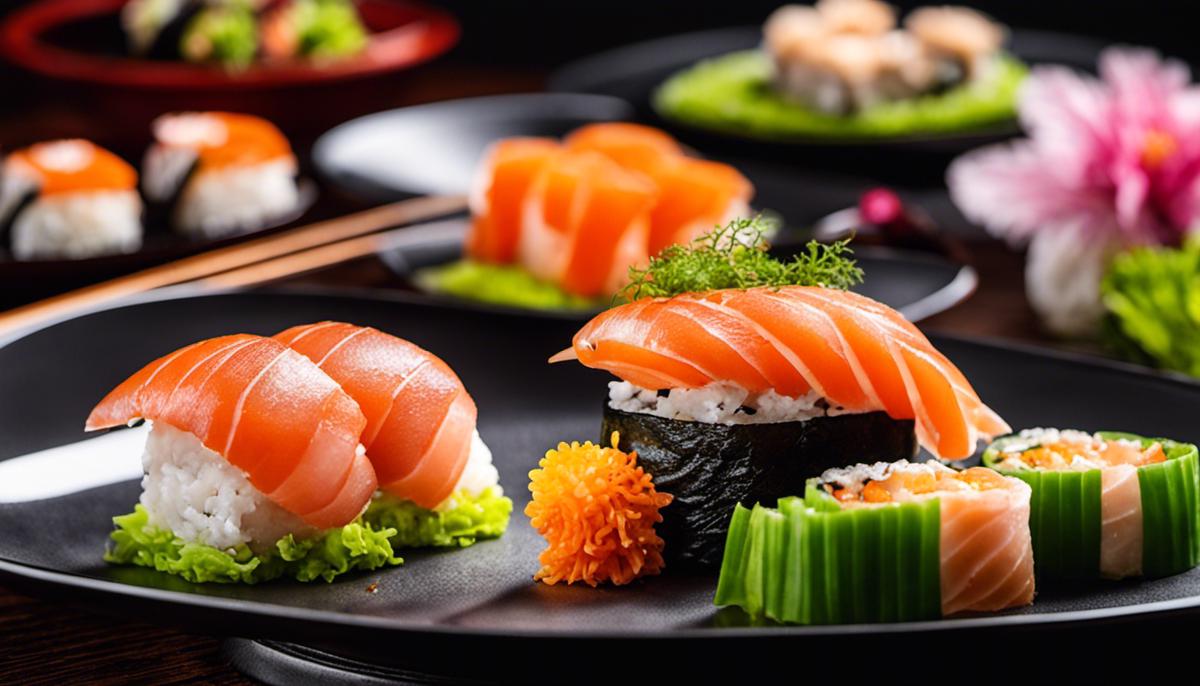
Trends and innovations in sushi
In a world that is constantly evolving, the world of sushi does not stand still. Excellent sushi masters and creative chefs are constantly on the lookout for innovations and modern interpretations of this traditional Japanese dish. But with all this novelty, what are the latest and most exciting additions and variations that are expanding the world of sushi today?
Let’s start with the sushirito. An intriguing fusion of sushi and burrito, this creative method of sushi presentation first appeared on the streets of San Francisco and quickly captured the hearts of sushi lovers. The best part? It doesn’t need any special dishes, and its portable nature makes it the perfect on-the-go snack.
Another trend is vegan sushi. This is a true testament to how sushi can adapt to changing dietary trends. Here, the traditional raw fish is replaced by creative combinations of vegetables, mushrooms and even fruits. Not only is it a great option for vegans, but it’s also a treat for anyone looking for something new.
But what if sushi took a sweet turn? Yes, we’re talking about dessert sushi. This surprising but delicate twist takes sushi to a whole new level with fillings like chocolate, fruits, and even cakes. Certainly an exciting novelty for those with a penchant for sweets!
In terms of aesthetics, we’ve also noticed the emerging trend of Mosaic Sushi. In this trend, rolls are arranged in such a way that they create beautiful patterns and designs. The focus here is more on the presentation, with the process being almost as satisfying as the end result.
Another segment of the sushi world is experimenting with the use of luxury ingredients that elevate sushi to gourmet heights. Think gold-plated sushi, or sushi garnished with caviar or even truffles. These trends appeal to a clientele that is looking for the experience of exclusivity and sophistication.
It’s impressive to see how flexible and adaptable sushi can be. From the street to gourmet restaurants, from tradition to innovation, from salty to sweet, it always finds a way to reinvent itself while preserving its essence. Regardless of the trends, one thing remains certain – the fascination with the delightfully simple yet incredibly diverse dish called sushi will continue.
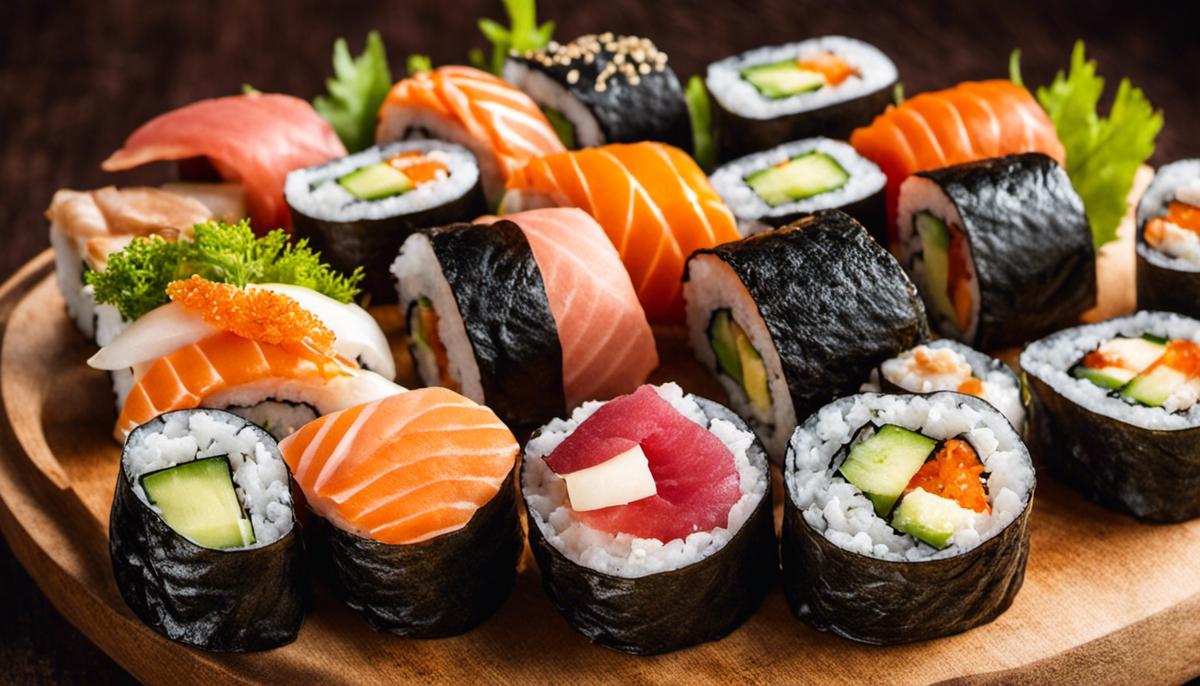
In the fascinating world of sushi, the possibilities remain endless and its future is brimming with possibilities and innovations. Whether it’s a vegan rebirth or a fusion with a Western treat like the burrito, sushi continues to find its place at the center of gastronomic evolution without forgetting its deep-rooted traditional values. With its global popularity and changing character, a dynamic interrelationship between tradition and innovation is emerging, giving permanence and relevance to this gastronomic specialty. Today’s sushi is not only a testimony to its impressive past, but also a vivid vision of its future. It remains a key component on the world’s menu. The journey of sushi continues, into hearts and palates around the world.
